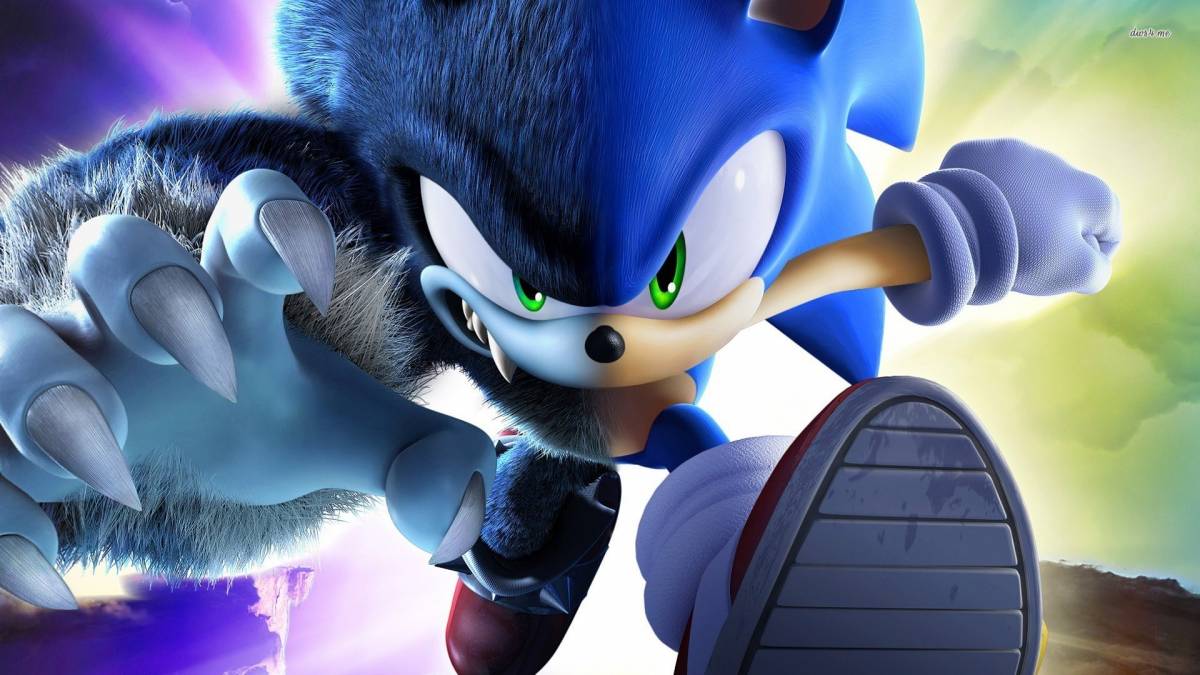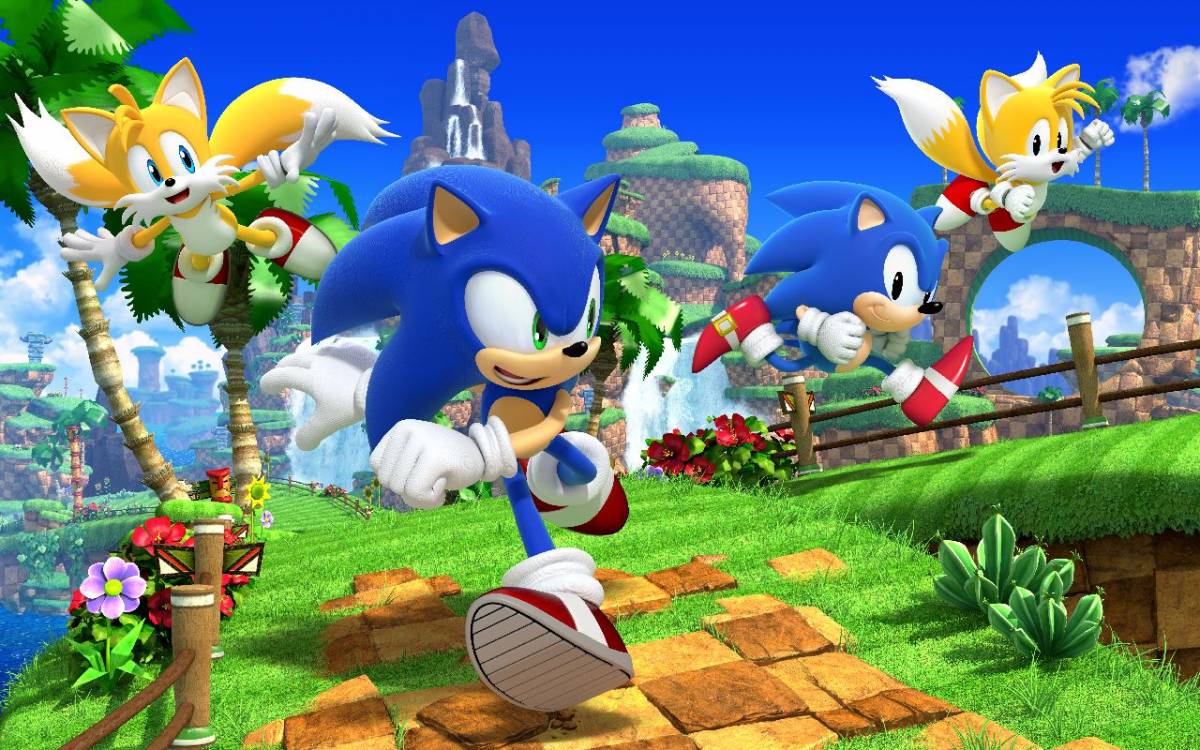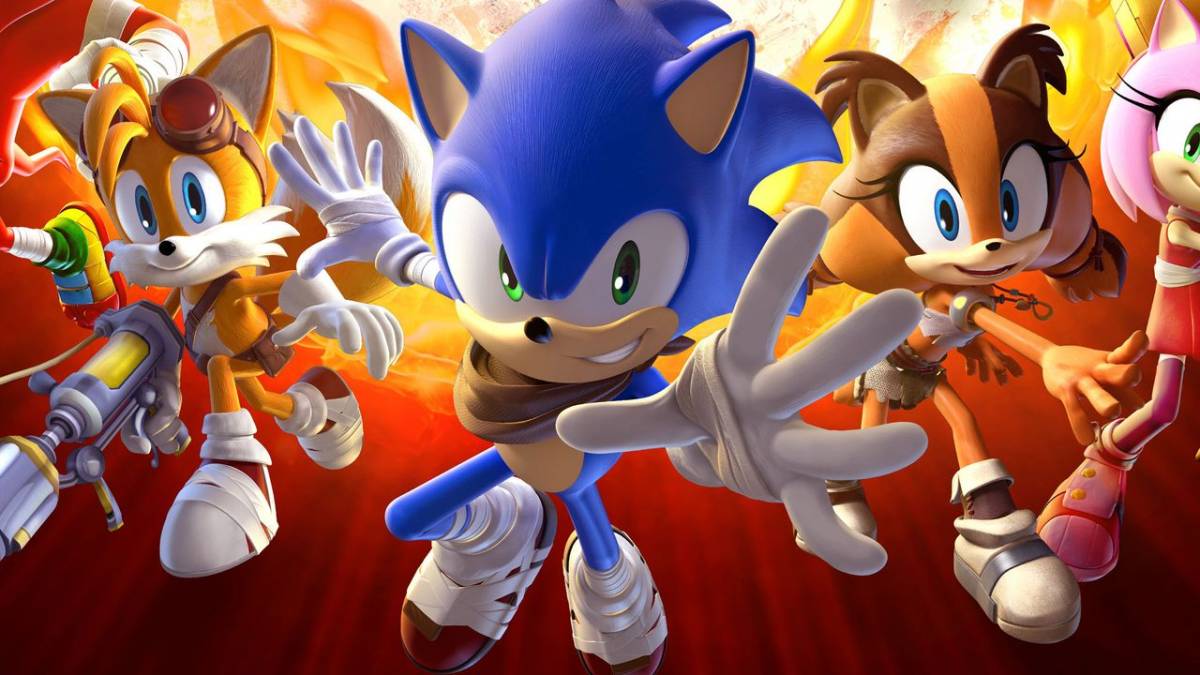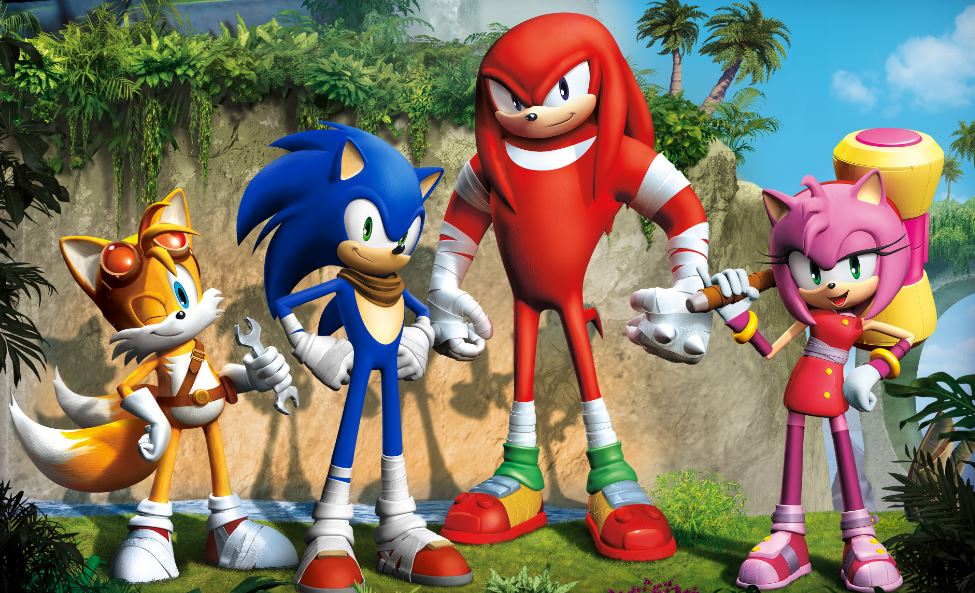Over the last twenty five years, Sonic has had a meteoric rise to popularity and an equally tumultuous fall from grace. A once prevalent character who was almost as recognisable as Mario has fallen from a dizzying height whilst his plumber pal continues to be a videogame titan.
But why did the portly plumber succeed whilst the loveable blue blur failed? Let’s look at when and why the Sonic series went wrong and why I believe it is back on the right track. For the sake of brevity, the glut of titles that encompasses everything from card, pinball, snowboarding, racing and RPGS, as well as the handheld titles, will not be covered.
Genesis does what Nintendon’t
Looking back, it is hard to imagine that the Genesis once had a miniscule 6% share of the US home console market, but that was the case in the early 90s. Sega needed to do something big in order to increase its market share and they did. First came the Genesis does what Nintendon’t campaign, Joe Montana’s sports game, and Alex Kidd, but it wasn’t until Sonic arrived that things really began to pick up.
Not everyone was convinced by the fuzzy blue hedgehog, though. The head of Sega of America at the time, Michael Katz, said “I certainly underestimated the potential of Sonic” during an interview with Ken Horowitz. He believed that children between the ages of 4-16 wouldn’t be familiar with a hedgehog and developing widespread awareness would be difficult with such a mascot.
The blue hedgehog quickly proved any doubters wrong, though, as it not only went on to receive critical and commercial acclaim, but it pushed the sales of the Megadrive through the stratosphere. The speedy Sonic games were the perfect series to demonstrate the Megadrive’s ‘blast processing’ which enabled fast moving visuals. Consumers were sold on the concept and Sega ended the generation outselling the mighty Nintendo in the US.
Blast processing

When Sonic finally blasted onto television screens in 1991, it established numerous fundamental gameplay mechanics that have become synonymous with the series: breakneck speed, basic platforming, and cleverly placed enemies. Gamers and critics were equally enamoured with the spiky speedster and were eager for a follow up.
Sega didn’t rest on their laurels, though. The following three games added new, exciting gameplay elements that enhanced the experience. Sonic 2 added Tails, bigger, tauter levels, and a pivotal new ability called Spin Dash that enabled Sonic to accelerate on the spot until he was ready to shoot off at maximum speed. Sonic CD added different view perspectives and time manipulation. Sonic 3 & Knuckles added save points, a lot of interactive environmental objects, a variety of shields that take advantage of environments, hidden secrets and multiple pathways.
Unfortunately, the golden age of Sonic was about to pass.
The slow decline

After the release of the excellent Sonic and Knuckles, the series began a long and painful slump that would last until the late noughties. Whilst Mario seamlessly transitioned into 3D with the release of the excellent Super Mario 64, the same can not be said about the spiky hedgehog.
The first was Sonic Adventure. A title that was not only the first fully 3D game in the series (excluding the isometric Sonic 3D Blast), but was also the flagship title for the Dreamcast. Adventure needed to be special and pull out all the stops in order to wow consumers. It did. Lush, sprawling levels, bumpers that fired the player high into the air, huge set-piece moments, a hub world filled with hidden power ups, huge, intimidating boss battles and six long campaigns. It was a visual delight, but with this 3D technology came a host of problems.
These problems were not just a product of transitioning to 3D, but also a desire to create something more impressive than anything that could have been achieved on past consoles. Adventure featured an impressive six campaigns, but only two of them were enjoyable. These four campaigns featured fishing, clunky on-rails shooting, a treasure hunt where players have to navigate large levels using a metal detector-esque mechanic in order to find emeralds, and a generic adventure/platforming campaign. Sega’s ambition can not be doubted, but the inclusion of these campaigns felt unnecessary.
Adventure had a shopping list of prominent issues but these faults were somewhat understandable as most developers were adjusting to creating games in 3D. The problem was that these issues weren’t being corrected in later titles and were becoming progressively less forgivable.

Similarly, many of the games that were released after Adventure (Sonic Adventure 2, Sonic Heroes, Sonic Unleashed, Shadow The Hedgehog, Sonic Boom) added extra playable characters. None of them were successful. Gamers play these games, unsurprisingly, to run at a high-velocity and maintain momentum throughout a level, not to play as a robot, an evil hedgehog with a gun, a, err, werehog, or any other side character unless they play exactly like the titular hero. Similarly, cars, swords or any other unnecessary items, diminish rather than improve the experience.
For example, almost every game from Sonic Adventure to Sonic and the Black Knight had a camera that would occasionally pan to odd angles. An issue that was especially frustrating during segments that involved intricate manoeuvring between narrow or moving platforms. The odd exception was Sonic and The Secret Rings which avoided situations where the camera would be an issue by avoiding sharp turns or breaking when Sonic changes direction. Unleashed also improved on the camera issue by introducing a camera that could seamlessly follow Sonic by panning through walls and objects, enabling blind spots to be avoided, but there were still moments where the camera movement could be slow or erratic.
It wasn’t until Colors was released in 2010 that the camera finally felt competent. Instead of having segments that had an awkward camera angle, the perspective would cleverly switch to 2d during moments that may be difficult to realise in 3D which, combined with utilizing the improvements that were present in Unleashed, enabled the camera to be dynamic and fluid.
Other issues that would crop up usually stemmed from new ideas being implemented such as health bars or a trigger that needed to be pressed to enable Sonic to run. It wasn’t until Sonic Colors was released that the series finally began to find its feet, focusing primarily on fast paced platforming. During an interview with SonicStadium.org, Takashi Iizuka said “we wanted to work with what was successful in the past. Like Sonic Unleashed’s daytime gameplay”. These daytime segments involved typical, high velocity running that were well received by critics. In contrast, the slow, fumbly night time segments were panned.

The following year, an equally well designed game was released in Generations. A leaner, longer and more varied title that seemingly built on the positive improvements of Colors, as well as taking heavy inspiration from some of the best stages of past Sonic games. I loved that Generations didn’t penalise the player every time they missed a platform and fell to their death, but instead often lead to an alternative route, enabling the natural momentum gained by running at full speed to be maintained whilst rewarding those who managed to stay on the primary path with a quicker, easier route.
After two successive, well designed titles were released within a short time of one another, as well as the release of the side-scrolling Sonic 4, it finally felt like Sonic was heading in a positive direction. Major issues were rapidly being addressed and it seemed that Sega were releasing games that were consistent with what long term fans wanted. Unfortunately, this streak was about to end with the release of Sonic: The Lost World. A title that, once again, focused on pushing boundaries rather than refining elements that worked well in previous titles.
The Lost World wasn’t an inherently bad game, but it occasionally fell short due to a couple of interesting ideas that were implemented poorly. For example, an awkward and unwanted addition of a run button and fiddly parkour mechanics that could cause players to accidentally run up walls. Fortunately, these niggles are only occasionally irritating and can be ignored for the large part. Running around spherical objects was a refreshing take on an old formula, but it was a concept that got a bit old by the end of the game.

Sadly, things were about to take a turn for the worse once more with the release of the dreadful Sonic Boom: Rise of Lyric. A game that is so thoroughly terrible that Sonic: Unleashed looks like a classic by comparison. The awful camera, a selection of bland characters, erratic framerate, but the worst problem about this game is how they have slowed down Sonic as the gameplay focuses more on exploration. Once again, another Sonic title failed in part due to being overloaded with ideas. During a conversation with Sega Nerdcast, former Sega employee Steven Frost said “If there’s any lesson for me, it’s that being too ambitious can be bad.“, highlighting how Sonic Boom suffered because it was overloaded with ideas.
As a Sonic fan, it has been disheartening to watch a series fall from such lofty heights to the abysmal lows of Boom, but what I have found the hardest to take was that it finally felt that Sega were making slow and steady progress in fixing some of the long running issues until Boom took a couple of steps back.
Rolling around at the speed of sound

When Sonic hits its stride, very few games can match the adrenaline rush of running at full speed, weaving around objects and enemies, jumping across large gaps, or grinding down endless spirals. Experiences so intoxicating that even veteran reviewers will occasionally overlook large swathes of bad gameplay design due to the joy that is gained when everything in a Sonic game clicks.
Even whilst playing awful games such as Sonic Unleashed, I have always felt that there was an undeniable opportunity for them to be great. Diamonds in the rough, so to speak. That is why when Sonic Colors and Generations came out within a year of one another and addressed a number of long-established issues, it felt like Sega were finally on track. A great Sonic game that could be the 3D equal to Sonic 2 could be just around the corner. Even Boom couldn’t dampen my belief that something great awaits in the distance.
In fact, Sega themselves have admitted that they are spending a lot more time making sure that future titles will be of the highest quality. During an interview with MCVUK.com, Gergscovich, Chief brand officer for Sega of America, said “One of the things about Sonic Boom: Fire & Ice is that we held the title for a year, which is not something Sega has traditionally done, but this focus on quality is really about trying to take Sonic back to where it used to be”, highlighting how more attention is being focused on improving the experience. I feel that “take Sonic back to where it used to be” means less complicated, speed focused gameplay, rather than hub worlds, multiple characters, slow platforming and fighting off huge swathes of enemies.
Reach for the Stars
The three upcoming titles Sonic Fire & Ice, Sonic Mania and the currently untitled project all look backwards to move forwards, taking inspiration from the 2d classics. Sonic Mania takes place on a 2D plane and borrows heavily from the early 2D titles. For example, the first level takes influence from Green Hill Zone, and the second level having a similar design to the Carnival Night stages in Sonic 3. Fire and Ice looks fluid and as the developer have said exploration and collectibles are optional the game should flow far better than its predecessor.
The untitled project focuses on only two characters and it even says in the trailer “but even heroes need help”, cutting to a shot showing classic Sonic running alongside his newer counterpart, suggesting that only the two of them will be making an appearance and that, like Generations, it will switch between 2d and 3d levels.
All three of the announced games look like they have the potential to be solid releases and even though the series has had more ups and downs than a rollercoaster, the confidence I have in Sega has been steadily building since Generations and Colors. A confidence that is further compounded due to the fact that Sega themselves said they have held back games to focus on quality.
The future is bright for the blue blur. Hopefully, he will be ‘running rings around the competition’ sometime soon.
Some of the coverage you find on Cultured Vultures contains affiliate links, which provide us with small commissions based on purchases made from visiting our site. We cover gaming news, movie reviews, wrestling and much more.



